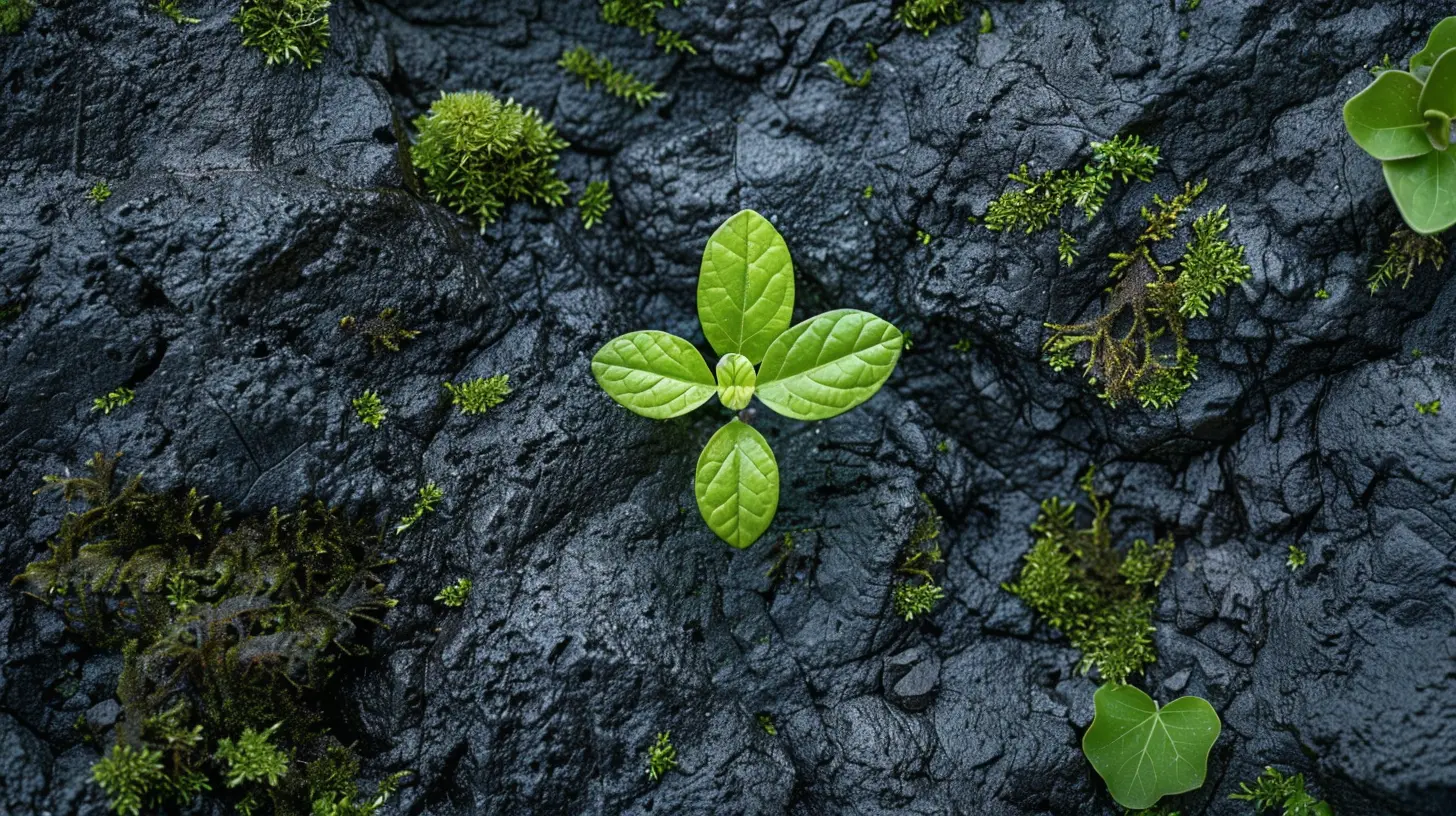Sustainable Growth Models for Eco-Conscious Businesses
7 July 2025
Running a business in today’s world isn’t just about making money—it’s about making an impact. And if you're an entrepreneur who cares about the planet, you're already ahead of the curve. Sustainable growth models for eco-conscious businesses aren't just trendy buzzwords; they’re strategic, long-term approaches to business that help the Earth and boost your bottom line.
Let’s take a deep dive into how you can build and scale a business that’s green, smart, and future-ready.
Why Sustainability Is No Longer Optional
Let's be real—climate change is no longer a far-off threat. Customers, partners, and even governments are pushing for change now. Businesses that don't get on board with sustainability are going to be left behind like fax machines in a smartphone world.More and more customers are voting with their wallets. They’re supporting companies that walk the talk when it comes to environmental responsibility. So, being an eco-conscious business isn’t just good for the Earth—it's good for your brand and customer loyalty, too.
What Does "Sustainable Growth" Really Mean?
Before we jump into models and strategies, let’s get on the same page. Sustainable growth means expanding your business in a way that doesn’t drain resources, harm the environment, or compromise future generations’ ability to thrive.It’s about the triple bottom line: People, Planet, and Profit. If your growth benefits your employees, reduces environmental harm, and still turns a healthy profit—you’re winning.
The Building Blocks of Sustainable Growth
Think of sustainable growth as building a house. Each element is a sturdy brick that helps support long-term success. Here's what you need:1. Eco-Friendly Business Practices
First up, go green at the core. That means weaving eco-conscious decisions into every aspect of your operations. Some ideas?- Choose renewable energy sources for your office.
- Use sustainable packaging.
- Source materials locally and ethically.
- Go digital wherever possible to reduce paper waste.
These small changes stack up fast, and customers notice.
2. Circular Economy Thinking
Ever heard of the circular economy? It’s basically the opposite of the traditional "take-make-waste" model. Instead, it’s all about designing products and systems where nothing goes to waste.Imagine if your old phone parts were reused to make a new one. That’s circular thinking. In your business, this could mean:
- Designing products that can be reused or recycled.
- Offering repair services instead of replacements.
- Encouraging customers to return products at the end of their life cycle.
It’s better for the Earth—and it keeps customers coming back.
3. Measurable Environmental Goals
You can't improve what you don't measure. Tracking your environmental impact is key to real, lasting sustainability. Consider measuring things like:- Carbon footprint
- Water usage
- Energy consumption
- Waste production
Not only does this help you stay accountable, but it also gives you bragging rights when you hit those green goals.
Smart & Scalable Growth Strategies
Now that you’ve got the foundation, let’s talk strategy. Here’s how eco-conscious businesses can grow without leaving a giant carbon footprint behind.1. Slow and Steady Scaling
You’ve heard the phrase “go big or go home,” right? Well, not here. Sustainable businesses grow with intention. Instead of chasing hyper-growth, focus on quality, stability, and lasting value.Build your customer base slowly, ensure your supply chain can support demand, and only take on what your team can handle without burning out—or burning fossil fuels.
2. Leverage Green Marketing
Let’s not be shy—if you’re doing good for the planet, talk about it! Green marketing helps you stand out and connect with conscious consumers. But remember: honesty is key.Avoid "greenwashing" (pretending to be eco-friendly when you’re not). Instead, share your actual efforts and achievements.
Not sure how? Try:
- Storytelling about your sustainability journey on your blog.
- Sharing behind-the-scenes videos on social media.
- Highlighting eco-certifications on your product labels.
3. Partner with Like-Minded Brands
You’re not in this alone. Chances are, other businesses in your industry are also trying to do right by the planet. Partner up!Collaborating with eco-friendly brands can help you:
- Share resources
- Tap into each other's audiences
- Create joint campaigns for bigger impact
It’s a win-win—and it builds a stronger green business community.
Real-World Examples of Sustainable Business Models
Let’s look at a few businesses already crushing it with sustainable growth.1. Patagonia
This outdoor apparel brand is practically the poster child for eco-conscious business. They encourage customers to repair clothes instead of buying new ones. Their supply chain is transparent, and they donate a chunk of profits to environmental causes. Their growth? Big and green.2. Ecosia
Ecosia is a search engine that plants trees with its ad revenue. The more people use it, the more trees get planted. They’ve managed to scale worldwide while staying laser-focused on their mission.3. Allbirds
These sneaker makers use natural materials like wool and sugarcane instead of synthetics. They’re upfront about their emissions and even label each product with its carbon footprint. It’s transparency and sustainability wrapped into a comfy shoe.Technologies That Power Sustainable Growth
Tech is a total game-changer when it comes to sustainability. Whether you're a startup or a small family biz, the right tools can help you grow greener. Let’s break down a few must-haves:1. Sustainable Supply Chain Software
This helps you track where your materials come from, who produced them, and whether they meet your green standards. Think of it as Google Maps for your products' journey.2. Carbon Tracking Tools
Platforms like Sustain.Life or Planetly let you monitor your carbon output and find ways to reduce it. It’s like a fitness tracker, but for your carbon footprint.3. Remote Work Tech
Cutting down on commuting and office energy use? Yes, please! Tools like Zoom, Slack, and Google Workspace let you run a tight ship from anywhere.Financial Sustainability: Making Green = Making Green
Let’s not forget—your business needs to make money to survive. Sustainable growth means being financially sound without cutting environmental corners.Here’s how to keep it profitable and planet-friendly:
1. Invest in Energy Efficiency
LED lights, solar panels, better insulation—these upgrades might cost more upfront, but they pay off big time in the long run. It's like swapping a gas guzzler for a hybrid. The savings keep piling up.2. Apply for Green Business Grants
Governments and nonprofits often offer funding to eco-conscious businesses. Do a little digging—you might find free money to help you scale sustainably.3. Charge What You’re Worth
Being sustainable doesn’t mean being cheap. Don’t be afraid to price your products or services based on their real value. People are willing to pay more for ethical, eco-responsible brands. Just make sure you tell your story well so they understand what they’re paying for.Creating a Culture of Sustainability
It’s not just about what you sell—it’s about who you are. You want your entire team to be on board with your eco-values. Here’s how to make sustainability part of your company’s DNA:- Educate employees on green practices.
- Involve them in sustainability goals.
- Celebrate eco wins as a team.
- Encourage ideas from everyone, not just management.
When your team buys into the mission, your impact multiplies.
Final Thoughts: Small Steps, Big Impact
Here’s the bottom line—building a sustainable, eco-conscious business isn’t about perfection. It’s about progress. Make the changes you can, stay focused on your mission, and don’t be afraid to grow slowly and intentionally.Think of it like planting a tree: it takes time, care, and patience, but eventually, it grows into something strong, lasting, and life-giving.
So go ahead—build that green business of your dreams. The planet (and your customers) will thank you for it.
all images in this post were generated using AI tools
Category:
Business GrowthAuthor:

Caden Robinson
Discussion
rate this article
2 comments
Lysara McCord
What a fantastic read! Embracing sustainable growth models is not just good for the planet, but also a joyful journey for eco-conscious businesses. Let’s thrive together! 🌱✨
December 3, 2025 at 4:24 AM

Caden Robinson
Thank you! I'm glad you enjoyed the article and resonate with the importance of sustainable growth. Let's continue this journey together! 🌍💚
Faelith Phillips
Great insights, thank you!
July 27, 2025 at 2:16 AM

Caden Robinson
Thank you for your kind words! I'm glad you found the insights valuable.


